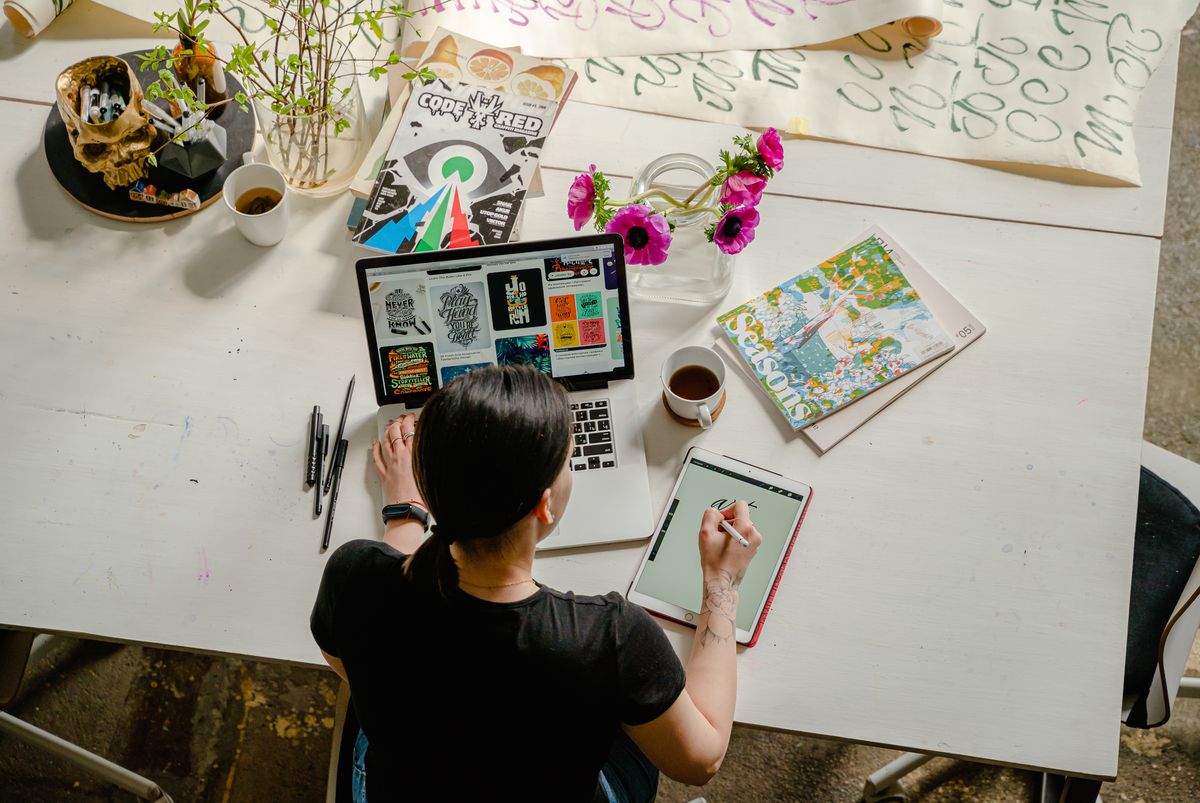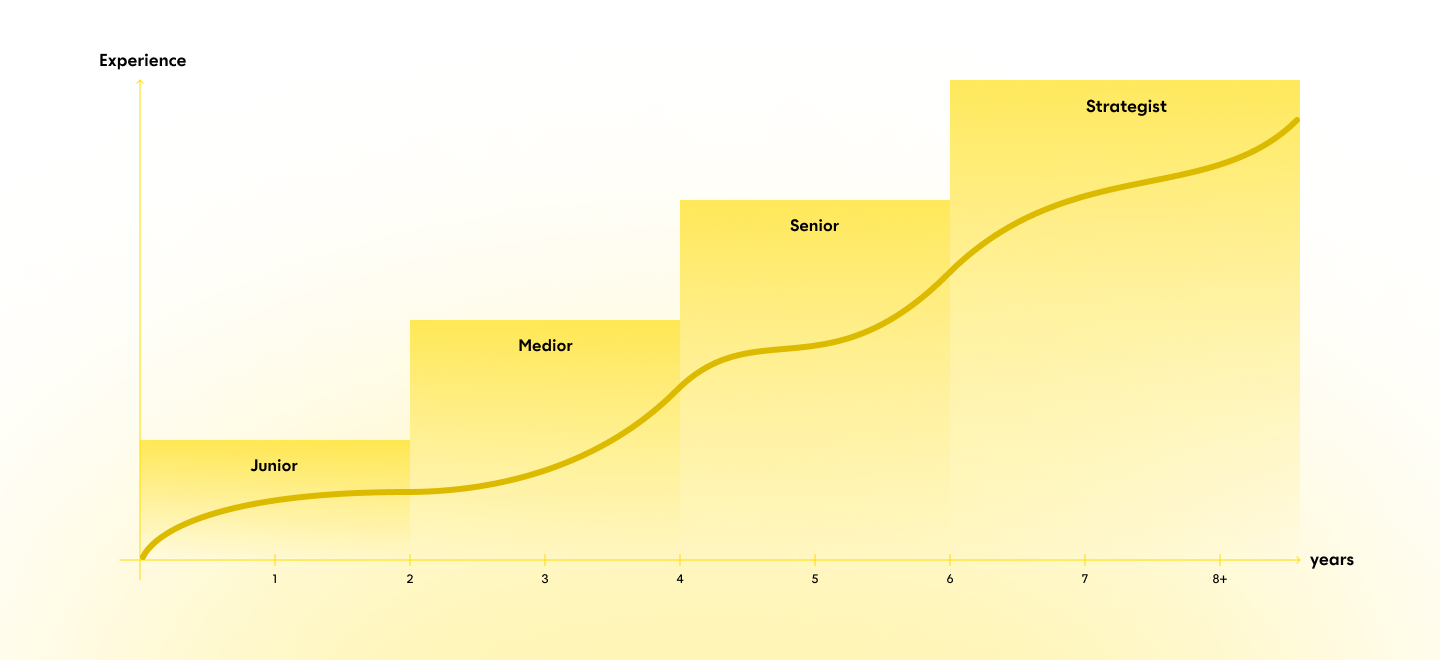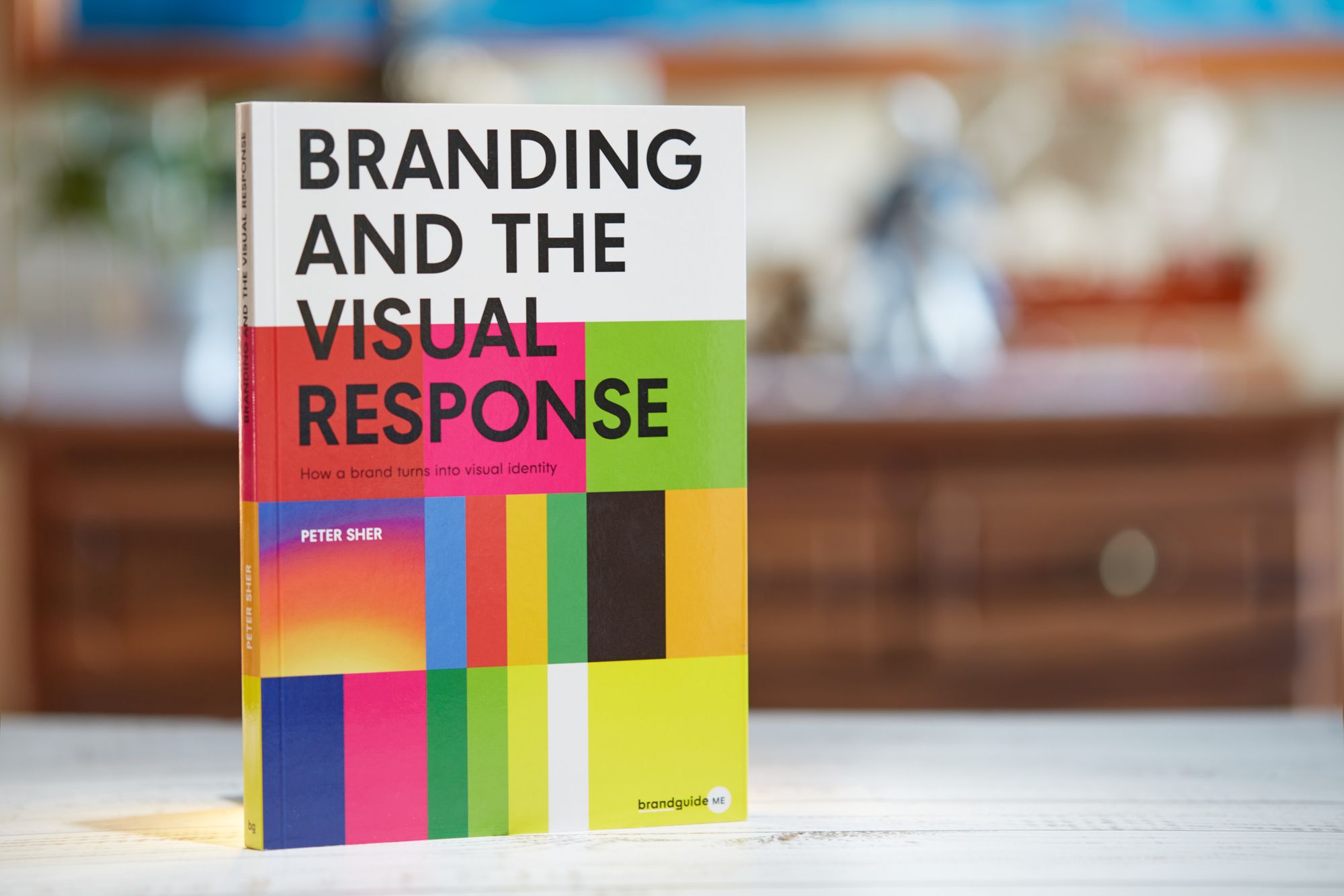Levels of development of a designer

My theory is that as a designer working on visual branding projects you go through several stages of development. You need time to grow, getting from one stage to the other takes time. To move on from a stage, you need a senior colleague or an external mentor/help you can continuously learn from, or you need some training, some source of knowledge that can help your progress. One such source is brandguide ✌️
Level 1 - junior
As a capable and talented junior colleague, you can create nice, aesthetically pleasing visual projects and identities. You are talented, you have a grip of proportions, arrangements and the dynamics of colours. You rarely or never meet clients, you get filtered information and instructions to work with. You have basic presentation skills, you are shy but you can communicate. Once you have about 1-2 years of experience, you can move on.
Level 2 - medior
In addition to strong visual ideas, you now have solid concepts as well. In your visual design you build on well-founded thoughts. You can present your concepts on a basic level to your colleagues. Once you have about 2-4 years of experience, you can become a senior colleague.
Level 3 - senior
Here you already have a strong connection between strategy and visual response. You learn how you can provide a close and adequate response to the brief. You understand the goals, help develop the strategy and perform some tasks during the collaboration with stakeholders, but you don’t manage strategic workshops on your own. You support the work of your junior colleagues with feedback and guidance.
Level 4 - strategist
You can manage successful workshops independently. You can develop a strategy and you can assess and manage the visual response to it professionally. You are in contact with the stakeholders, and most of the time you are not involved in creating visual designs but in designing strategies, and you brief visual designers accordingly.

These four steps represent the general development path of designers. I indicated the time factor for all four, but time spent working in this field is by no means the only thing that affects development. Moreover, as the figure shows, this development is far from linear. Some aspects that may influence development:
- the designer’s personality - not everyone is cut out to be a strategist,
- a desire to learn, ambition - being lazy won’t get you anywhere,
- the environment - the mindset of the colleagues and the approach at the workplace
- the quality and quantity of the projects
I’m not saying that there are no other levels or steps in between. This is an ideal classification I created for brandguide based on what I have learnt at zwoelf.
It is clear that continuous improvement is expected in the design profession as well. Lifelong learning is something you can and you should achieve. Technological development has a huge impact on the work of visual designers. New display devices and platforms pose new challenges to designers all the time. Like everywhere else, if you don’t educate yourself, you will get behind and find yourself at a competitive disadvantage. Digital development leads to the digitisation of visual design as well: it is not only our design tools that have gone digital, the trend is the same for applications, too. One example is that these days we design much fewer business cards and much more email signatures.
The aim of brandguide is visual development: hopefully I don’t sound conceited when I say that our key objective is to improve visual culture in Hungary. For this, we need to support the designers themselves as they are the ones who shape visual reality in Hungary and abroad. The first step in this direction was the book i wrote on Visual design, how it can serve branding.
If you want to use Brand Sprint, visit our resources page, it provides you a free PDF guide to learn it—and perhaps use it in your next project, adding value to your services, or by our book which is a step by step guide to branding 👇

How a brand turns into visual identity
Ready to elevate your design strategy? Get this must-have book in ebook or print format. Packed with practical advice, it’s your roadmap to becoming an elite designer who thinks strategically and builds unforgettable brands.
